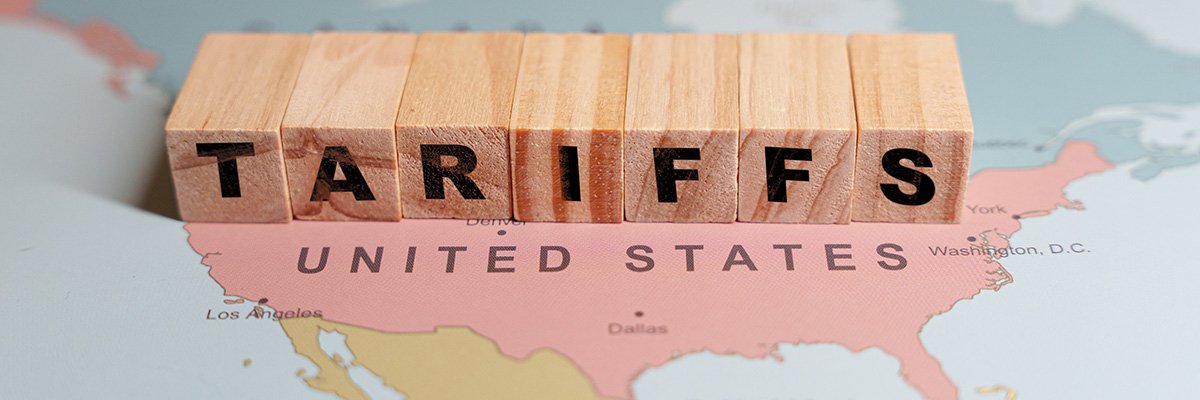Tariffs proposed by the US government threaten to upend trading relationships across the world, with IT procurement already feeling the effects. And the tariff situation has changed many times since Donald Trump took office.
Since the president announced plans to levy charges on imports to the US, there have been retaliatory moves by trading partners that include Canada, Mexico and especially China. Meanwhile, there have been pauses on tariffs ruled by the US International Trade Court, pending an appeal, and trade agreements with countries that include the UK.
But so far, the 10% global tariff on most exports to the US looks set to come into force after the current 90-day pause ends.
Even so, some public sector organisations, including NHS Trusts, have delayed IT upgrades due to uncertainty about pricing because of tariffs.
What’s the risk to procurement of tariff disruption?
IT is at some risk from disruption due to tariffs. IT projects often run over several years, with long lead times for some hardware components and complex global supply chains. Tariffs hold the potential to drive up short-term purchasing costs.
But the longer term impact of US tariffs and retaliatory measures from other countries is hard to predict. This is because of the political negotiations taking place, but also because of how organisations buy IT and related services.
The impact of tariffs will differ between hardware OEMs, cloud providers and software-as-a-service (SaaS) suppliers that increasingly build their products on top of the large cloud suppliers’ infrastructure.
“Tariffs will likely drive up costs for end customers in the long run as suppliers have to pass on those expenses,” says Michael Bayer, chief financial officer (CFO) at cloud data company Wasabi.
“Differential tariff structures are already having an impact on storage suppliers who are reconsidering their long-term manufacturing strategies in light of a dynamic and uncertain trade environment,” he adds. “Those contribute to supply chain constraints. We see this already as public and private sector customers consider moving to cloud to mitigate these effects.”
Cloud computing can offer some protection from tariff-related IT cost inflation, at least in the short term. But for businesses that operate hybrid environments, as well as the cloud providers themselves, tariffs on equipment will inevitably affect costs over time – but tariffs are not the only reason.
Ashish Nadkarni, group vice-president and general manager for worldwide infrastructure research at industry analysts IDC, adds: “We’ve been polling CIOs and IT decision-makers, and most of them are bracing for higher budgets to procure infrastructure.
“Tariffs may be one reason, but more largely, they’re looking at increased cost given the geopolitical uncertainty. Most of them are bracing for higher operating costs. If you are a CIO, I think it will be difficult to ask your CFO for more money mid-cycle. But in the budget cycle, you’re going to want a higher budget because that uncertainty is going to linger for a few more years.”
This, Nadkarni says, will apply even if the US strikes bilateral trade deals with more countries. Organisations might also be able to defer purchasing.
Jon Collins, field CTO at analysts GigaOm, adds: “Hard infrastructure procurement is on three-year cycles anyway, so it’s more about understanding what is coming up for renewal. At the same time, organisations are increasingly looking to sweat their assets, increasing to five or even seven-year cycles.”
As well as keeping hardware running for longer, organisations might consider buying used or refurbished hardware – this happened during the Covid-19 pandemic, when hardware was often in short supply. Firms might also look at other ways to maximise the value of their infrastructure, such as improving server and storage utilisation.
What challenges does the public sector face from tariff disruption?
Private sector organisations, however, are better placed to defer purchases than their public sector counterparts. Private sector firms can also increase prices or, in extreme cases, choose not to offer a service at all. That is rarely the case in the public sector.
Not only are most public sector services critical, but budgets are fixed and departments often under pressure to cut costs or do more with less. Some public sector organisations can increase what they charge some users, but most cannot, and deferring projects causes practical and political issues. It might not, for example, be possible to push an IT upgrade into the next Parliamentary or Congressional cycle.
“Public sector organisations face unique challenges during uncertain times,” warns Wasabi’s Bayer. “Private sector entities can scale up or down their investments. But public sector entities provide critical public infrastructure services upon which citizens depend, and they are subject to rigid budgeting and spending cycles so they can’t easily absorb cost increases.”
Another issue facing the public sector is tighter controls on data sovereignty. Some workloads, or at least their data, cannot be moved to the cloud. For other datasets, cloud options are more limited, with the need to use local availability zones. This removes a potential mitigation for public sector CIOs, even if cloud prices are less likely to rise over the short term.
“I do think that quietly, behind the covers, government agencies are factoring in increased budgets for procuring [IT],” says IDC’s Nadkarni. “They won’t declare it, but they’re at the mercy of contractors who are not going to deliver goods if those goods are going to cost more.”
Local government is likely to fare worse than central government, he suggests, due to smaller overall budgets.
How do you use the cloud to mitigate tariff disruption?
Can cloud offer a way out, even for public sector bodies that handle sensitive data? The answer is a qualified yes, as long as CIOs and chief data officers are able to match data residency requirements to budgets. Organisations should also consider greater use of software-as-a-service applications, with the right data protection in place.
“I am hearing of non-US organisations stating they would rather not buy from US companies,” says GigaOm’s Jon Collins. “I think this is really driving a desire for control and sovereignty, in terms of whether an organisation – commercial or governmental – can make its own decisions, guarantee its own data and minimise the chances of surprises down the line.”
Cloud and SaaS services also have good reasons to control costs for public sector customers. Governments have large budgets and are willing to sign long-term contracts. And with hardware making up only one part of cloud suppliers’ costs, tariffs should only have a second or third order effect on what customers ultimately pay.
Even if cloud providers do face higher costs – and raise their prices in time – switching from on-premise architecture to cloud avoids a short-term spike in infrastructure costs.
CIOs might even be able to lock pricing. The cloud services market remains highly competitive and governments are usually reliable customers. Even if cloud is not a public sector CIO’s first choice, it can buy time while the global trade situation stabilises, allowing services to keep running.







